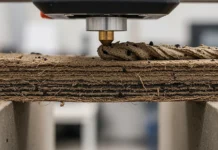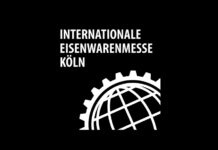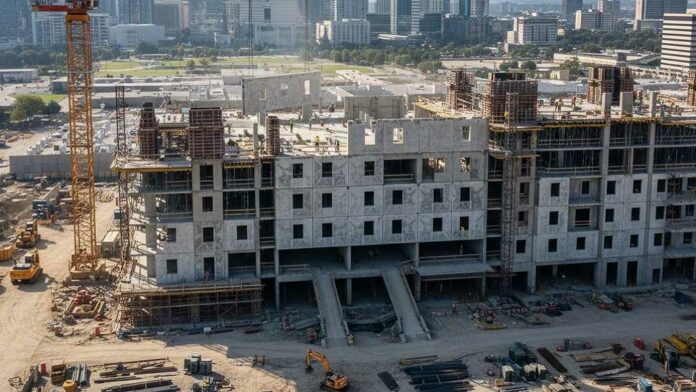Modular Concrete Systems Driving Faster Urban Infrastructure
Urban development faces unprecedented challenges as global populations continue migrating toward cities, creating intense pressure on existing infrastructure while demanding rapid expansion of transportation networks, utilities, and public facilities. Traditional construction methods struggle to meet these escalating demands within acceptable timeframes and budgets. However, modular concrete systems are emerging as transformative solutions that fundamentally reshape how urban infrastructure projects are conceived, designed, and executed.
The evolution from cast-in-place construction to sophisticated modular concrete systems represents more than technological advancement; it embodies a paradigm shift toward industrialized construction processes that deliver consistent quality, accelerated timelines, and enhanced cost-effectiveness. These systems leverage precision manufacturing techniques, standardized components, and systematic assembly processes to achieve outcomes that were previously unattainable through conventional construction approaches.
Revolutionary Approach to Modular Construction
Modular concrete systems fundamentally reimagine construction logistics by transferring much of the building process from chaotic construction sites to controlled manufacturing environments. This transition enables unprecedented precision in component fabrication, quality control implementation, and timeline management while simultaneously reducing weather-related delays and site-specific complications that plague traditional construction projects.
The manufacturing environment provides optimal conditions for concrete curing, with controlled temperature, humidity, and protection from environmental factors that can compromise material performance. Advanced curing chambers utilize steam curing, accelerated carbonation, and precision temperature control to achieve target strength characteristics in significantly reduced timeframes compared to field curing processes.
Quality assurance protocols in manufacturing facilities surpass what is achievable on construction sites through continuous monitoring, automated testing systems, and statistical process control methodologies. Each component undergoes comprehensive testing for dimensional accuracy, strength characteristics, and surface finish quality before leaving the manufacturing facility, ensuring consistent performance across entire projects.
Precast Concrete Innovations Transforming Infrastructure Development
Precast concrete technology has evolved far beyond simple structural elements to encompass sophisticated architectural and infrastructure components that integrate multiple building systems into single manufactured units. Modern precast elements can incorporate electrical conduits, plumbing systems, insulation layers, and architectural finishes during the manufacturing process, eliminating numerous field installation steps.
Advanced prestressing techniques enable precast concrete components to span greater distances with reduced material usage while maintaining superior structural performance. Post-tensioned precast systems can create continuous structural elements that rival cast-in-place performance while delivering the speed and quality advantages of manufactured components.
Three-dimensional manufacturing capabilities allow precast concrete producers to create complex geometries and architectural features that would be extremely difficult or impossible to achieve through conventional casting methods. Computer-controlled forming systems can produce curved surfaces, integrated architectural details, and precise dimensional tolerances that enhance both structural performance and aesthetic appeal.
The integration of embedded technologies during precast manufacturing creates intelligent infrastructure components with built-in monitoring capabilities, communication systems, and environmental control features. These smart precast elements can provide real-time performance data, structural health monitoring, and predictive maintenance information throughout their service lives.
Infrastructure Development Through Systematic Prefabrication
Prefabrication strategies for infrastructure development extend beyond individual building components to encompass entire structural systems designed for rapid assembly and optimal performance. Bridge segments, tunnel linings, utility vaults, and transportation infrastructure elements can be manufactured with precision tolerances and integrated systems that dramatically accelerate field installation processes.
Standardization of connection details and assembly procedures enables construction crews to achieve consistent installation quality while reducing training requirements and minimizing field errors. Modular connection systems often incorporate mechanical fastening methods that eliminate the need for field concrete pours and extended curing periods.
Logistics coordination becomes crucial for successful prefabrication implementation, requiring sophisticated supply chain management and just-in-time delivery strategies. Advanced project management systems coordinate manufacturing schedules, transportation logistics, and site preparation activities to ensure seamless component delivery and installation sequences.
The scalability of prefabricated infrastructure systems allows projects to be phased and expanded incrementally as funding becomes available or demand increases. This flexibility provides significant advantages for public infrastructure projects that must accommodate budget constraints and changing community needs over extended timeframes.
Construction Efficiency Optimization Through Modular Systems
Construction efficiency gains from modular concrete systems extend throughout project lifecycles, from initial design phases through final construction completion and ongoing maintenance operations. Design standardization reduces engineering time and costs while enabling optimization of structural performance and material utilization across multiple projects.
Concurrent manufacturing and site preparation activities compress project schedules by eliminating sequential dependencies that characterize traditional construction processes. While foundation work and site utilities are being installed, structural components can be manufactured simultaneously, reducing overall project duration by significant margins.
Labor efficiency improvements result from the repetitive nature of modular assembly processes and the controlled working conditions in manufacturing facilities. Skilled craftsmen can develop expertise in specific assembly procedures, leading to improved productivity and reduced error rates compared to the varied and often challenging conditions encountered on traditional construction sites.
Equipment utilization optimization becomes possible through standardized lifting and installation procedures that maximize crane efficiency and minimize equipment repositioning. Predictable component weights and connection procedures enable construction managers to optimize equipment schedules and reduce overall equipment costs.
Economic and Performance Advantages
The economic benefits of modular concrete systems extend beyond initial construction cost savings to encompass lifecycle advantages that provide long-term value for infrastructure owners. Reduced construction duration translates directly into earlier project completion and revenue generation, while consistent quality reduces maintenance requirements and extends service life.
Risk reduction represents a significant economic advantage of modular systems through more predictable project outcomes, reduced weather-related delays, and minimized field construction variables. This predictability enables more accurate project budgeting and reduces contingency requirements that often inflate traditional construction costs.
Performance optimization through controlled manufacturing conditions and standardized procedures typically results in superior structural characteristics compared to field-constructed alternatives. Consistent concrete quality, precise reinforcement placement, and optimal curing conditions contribute to enhanced durability and extended service life.
Environmental benefits include reduced material waste through precision manufacturing, minimized site disturbance, and reduced transportation requirements through optimized logistics. These environmental advantages increasingly translate into economic benefits through regulatory incentives and sustainability certification programs.
Future Innovations and Market Evolution
The continued evolution of modular concrete systems promises even greater efficiency gains and expanded application possibilities as technology advancement accelerates and market acceptance grows. Robotic manufacturing systems are beginning to automate component production processes, enabling 24-hour manufacturing operations and further improving consistency and cost-effectiveness.
Digital integration through Building Information Modeling systems creates seamless information flow from design through manufacturing and installation, enabling real-time optimization and quality control throughout project execution. These digital tools facilitate mass customization capabilities that combine the efficiency of standardization with the flexibility of custom design solutions.
Sustainable material innovations are being integrated into modular concrete systems to enhance environmental performance while maintaining structural and economic advantages. Recycled content, bio-based additives, and carbon capture technologies are becoming standard features in advanced modular concrete products.
Market expansion into new application areas continues as the benefits of modular construction become more widely recognized and technical capabilities advance. From residential construction to industrial facilities, modular concrete systems are finding applications across diverse construction sectors, driving continued innovation and market growth.
Conclusion
Modular concrete systems represent a fundamental transformation in how urban infrastructure is conceived, designed, and constructed. By leveraging manufacturing precision, systematic assembly processes, and optimized logistics, these systems deliver unprecedented combinations of speed, quality, and cost-effectiveness that traditional construction methods cannot match.
The successful implementation of modular concrete systems requires coordination across design, manufacturing, and construction disciplines, supported by sophisticated project management and logistics capabilities. However, the benefits of this approach are becoming increasingly evident as successful projects demonstrate superior outcomes and stakeholder satisfaction.
As urban development pressures continue intensifying globally, modular concrete systems provide essential tools for meeting infrastructure demands while maintaining quality standards and fiscal responsibility. The continued evolution and adoption of these technologies will play a crucial role in shaping sustainable and efficient urban environments for future generations.































